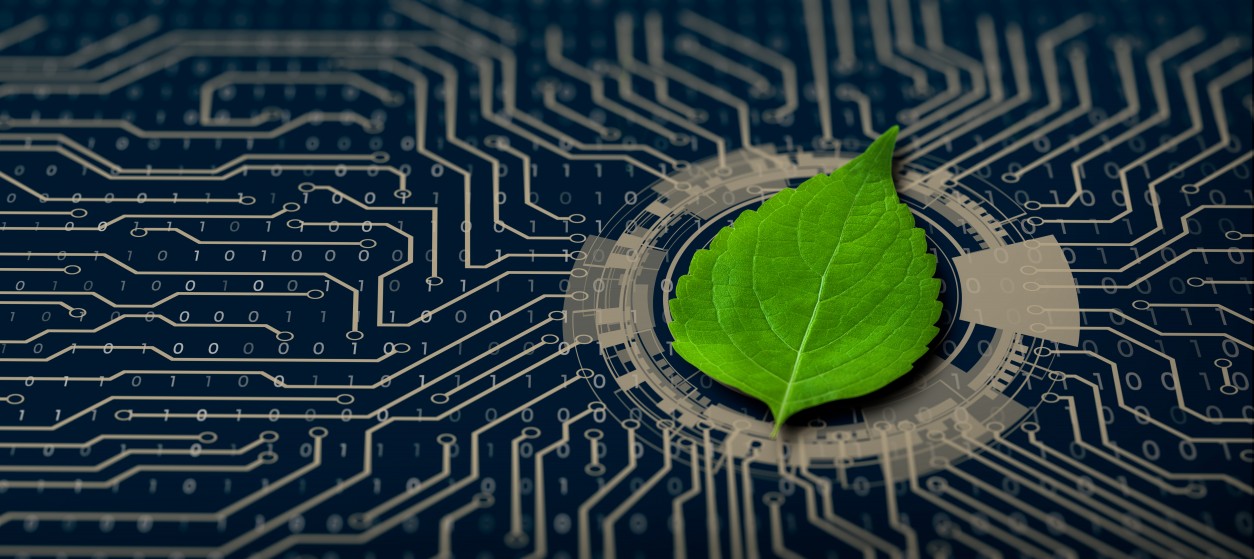Fueled by the fight against climate change and other reasons, organizations are increasingly taking their efficiency seriously. Nowadays, more than ever, responsible industry players are looking at managing their carbon footprint and ensuring that they have a handle on their corporate sustainability efforts. To this end, corporate and business-to-business companies have been turning to advanced digital technologies such as the Internet of Things (IoT) to tackle key sustainability issues and achieve ambitious sustainability goals. In general, digital technologies can greatly help in improving their environmental impact and sustainability. Hence, CIOs should use digital technology to help achieve environmental targets, while at the same time taking measures to boost the environmental performance of their IT infrastructures itself. Such measures including for example building a green cloud, integrating renewable energy into data centers, and making greater use of big data analytics.
Modern CIOs must not be only responsible for the digital transformation of their businesses and industries. They must also play an important role in helping companies reduce their carbon footprint and meet sustainability goals. CIOs are leading the twin transformation of modern enterprises, which includes both digital transformation and “green” transformation projects.
Digitization and Sustainability: The Power of the Twin Transformation
Ever since sustainability has become a priority for many companies, CIOs need to track and trace environmental performance across production processes and supply chains. In this direction they must keep track of the carbon footprint of business, production, and supply chain processes. A carbon footprint is a way of measuring the impact of an organization on the environment. It measures how much greenhouse gas (GHG) a business produces in its operations. The term comes from carbon dioxide, one of the most important GHGs.
Using digital technologies and tools modern enterprises are trying to answer sustainability related questions such as:
- Do you know how much carbon emissions you have?
- Do you know what is your organizations carbon footprint?
- Are you taking serious measures to reduce them? If yes, are you performing well enough in reducing your carbon emissions?
In addition to answering these questions, CIOs must be aware of their organization’s sustainability goals. To meet those goals, CIOs should track their organization’s carbon footprint and take steps to reduce it. Here is where digital technologies and tools come to automate the process of analyzing sustainability performance and improving their company’s environmental impact. As a prominent example, the digitalization of industrial processes makes it possible to track and trace a product’s lifecycle, from raw materials sourcing to delivery. This enables businesses to measure and improve the environmental impact of their operations. As another example, industrial enterprises can nowadays design and implement powerful digital twins that imitate production processes. Such digital twins can be used to simulate sustainability analysis scenarios at scale and to run what-if analysis. Likewise, there are technological tools (e.g., LifeCycle Assessment (LCA) tools) that enable the tracking of environmental parameters across different stages of the production lifecycle.
To meet stringent sustainability goals while maintaining a high-performing IT infrastructure, CIOs must create an environment that allows them to manage their environmental performance. One of the first steps towards creating this environment is to identify which technologies can help them track carbon footprint and how to use them in the best possible way. Among other uses, these technologies are usually deployed to automate the sustainability analysis process and to enable educated, data-driven decisions.
Digital Enablers of Sustainability Tracking
As already outlined, there is a variety of digital technologies, infrastructures and tools that can help CIOs meet their sustainability goals. Some of the most prominent examples follow:
- Internet of Things for CO2 data collection. IoT can be used for collecting data about CO2 emissions across production processes and supply chains. Specifically, IoT applications collect data from sensors that monitor environmental conditions at various points in the supply chain or production process. In most cases IoT sensors measure physical parameters such as temperature, humidity, light intensity, etc. Information about these parameters helps CIOs analyse how much energy is being consumed by each stage of the production process.
- Big data analytics. Once collected, IoT data need to be analyzed using Big Data analytics tools in order to estimate environmental performance targets based on historical data. This analysis includes the use of Machine Learning algorithms such as regression models or neural networks that make predictions about future values of carbon footprint KPIs (Key Performance Indicators). For example, regression models are commonly used to predict future CO2 emissions based on historical CO2 emissions data from previous years or months.
- Digital Twins for estimating CO2 emissions in complex production scenarios. As already outlined, digital twins provide the means for simulating sustainability scenarios and running what-if analysis. Digital twins are software models that represent real-world objects, processes, and systems. They capture the essence of the objects being modeled and allow users to analyze data on their own terms. The concept has gained popularity in manufacturing as a way to better manage complex supply chains and reduce costs. CIOs of modern industrial enterprises can therefore use digital twins to simulate future scenarios, such as how an increase in CO2 emissions would affect the cost of raw materials or energy consumption over time.
- Lifecycle assessments for tracking environmental performance and parameters across the production lifecycle. LCA assessment tools identify the most important environmental impacts that occur during each stage of a product’s life cycle (i.e., extraction, production, distribution, use, disposal). They also provide information about how these impacts relate to one another and how they can be reduced. The United Nations’ Global Reporting Initiative (GRI) is a leading organization that offers guidelines for performing lifecycle assessments. Its popular G4 guidelines focus specifically on carbon footprints and climate change issues.
The above list of technological tools is non-exhaustive. Additional benefits can be derived from technologies like Artificial Intelligence (AI), materials traceability and digital product passports. For instance, AI can be used to provide data-driven, prescriptive recommendations about how to configure production processes for CO2 reduction. Digital product passports can be used to continually acquire and leverage information about a products’ sustainability. Note also that digital technologies contribute themselves to CO2 reduction by limited travel, transport and other CO2 consuming physical activities.
As the world is moving toward a low-carbon economy, industrial organizations set ambitious environmental targets and sustainability goals. To meet these sustainability goals, it’s essential for CIOs to manage their organizations’ environmental performance. Some major companies are already implementing digital technologies to track and trace their carbon footprint. We therefore expect many other companies to follow this trend and to ride the wave of the twin transformation.








I am very happy to read this. This is the kind of manual that needs to be given and not the random misinformation that’s at the other blogs. Appreciate your sharing this best doc.
https://www.smortergiremal.com/